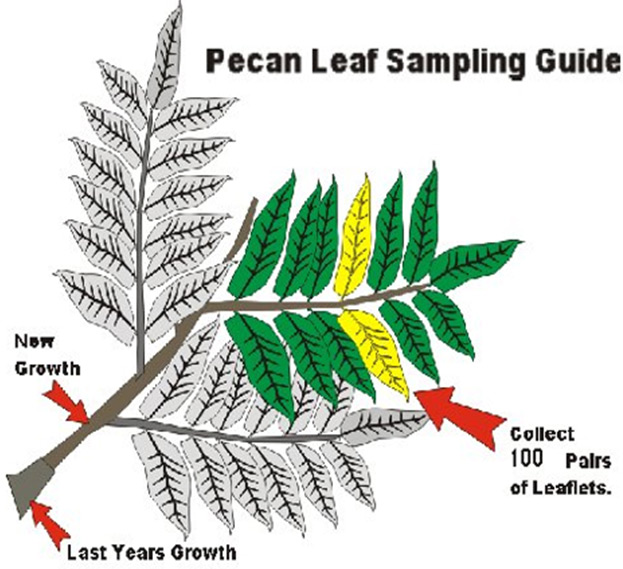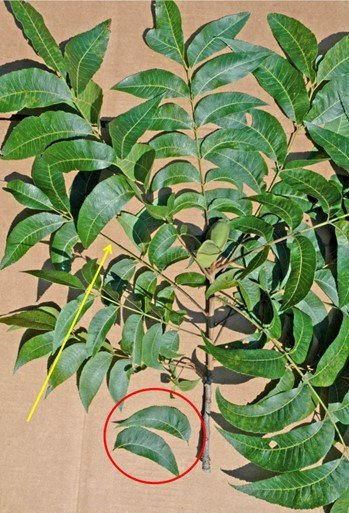Pecan Foliar Sampling for Fertility
Good measure of whether or not your fertility program is meeting nutrient needs for perennial crops:
- Can identify nutrient deficiencies before symptoms appear
- Can help determine fertility rates for the next season
- Many crops early growth in the spring pulls from nutrients applied the previous year
and stored in the plant’s tissues; later summer growth pulls from fertility in applied
to the soil.
- How you fertilize this year can impact next year’s crop more than fertilizer applied in the current season.
Samples should be pulled at the right stage of growth and from the right part of the plant for comparison to recommended standards.
Here are some sampling tips:
- For pecan the time to sample is July to early August.
- Pull samples between July 1st and July 31st off of bearing pecan trees.
- Collect 40-50 pairs of leaves from at least 20 trees. See the diagram below for which leaves to sample.
- The more leaves you collect and more trees you sample from the better the results!
- Collect leaf pairs opposite each other.
- Collect samples from trees of the same age.
- It is preferable to collect samples from trees of the same variety. But if a whole field is managed the same it is not necessary to sample varieties separately.
- Wipe leaves with damp paper towel, to remove any surface dirt or debris. (or foliar Zn sprays).
- Collect the sample on Monday and mail immediately!
- Send leaves in paper bags.
- Select leaves that are healthy and exposed to sun.
- Avoid leaves that are damaged, covered in dust or diseased.
- Randomly select leaves.
- Submit the form with Form AGRI 423, and $20 per sample + $5 shipping onset of any stress.

